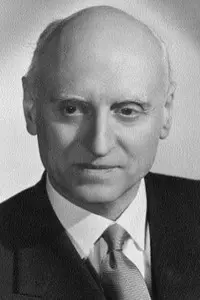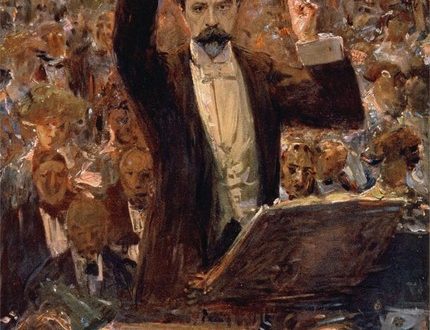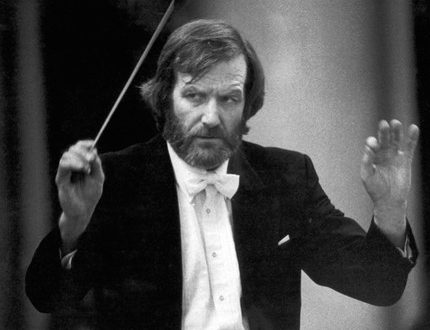
Nikolai Pavlovich Anosov |
Nikolai Anosov

Honored Artist of the RSFSR (1951). A highly erudite musician, Nikolai Anosov did a lot for the formation of the Soviet symphonic culture, brought up a whole galaxy of conductors. Meanwhile, he himself, as a conductor, was formed largely independently – in the process of practical work, which began in 1929. His official graduation from the Moscow Conservatory refers only to 1943, when his name was already well known to both musicians and listeners.
Anosov’s first steps in the musical field are connected with Central Radio. Here he worked initially as a pianist-accompanist, and soon acted as a conductor, staging Auber’s opera The Bronze Horse. An important stage in Anosov’s creative biography was his collaboration with the great master G. Sebastian in the process of preparing concert performances of Mozart’s operas (“Don Giovanni”, “The Marriage of Figaro”, “The Abduction from the Seraglio”).
Already in the thirties, the conductor began a wide concert activity. For three years he led the Baku Symphony Orchestra of the Azerbaijan SSR. In 1944, Anosov became an assistant professor at the Moscow Conservatory, with which his further fruitful pedagogical activity was connected. Here he received a professorship (1951), from 1949 to 1955 he headed the department of symphony (then opera-symphony) conducting. Among his students are G. Rozhdestvensky, G. Dugashev, A. Zhuraitis and many others. Anosov devoted a lot of energy to work in the Conservatory Opera Studio (1946-1949). Here he staged productions belonging to the best pages in the history of the educational theater – Mozart’s Don Giovanni, Tchaikovsky’s Eugene Onegin, Smetana’s The Bartered Bride.
After the Great Patriotic War, Anosov gave many concerts, performing with various orchestras. He happened to lead the Moscow Regional Orchestra, at the same time he was a permanent conductor of the State Symphony Orchestra of the USSR. Anosov found it extremely easy to find a common language with the orchestra members, who highly appreciated his erudition and talent. He constantly enriched his programs with compositions from different eras and countries.
Many works of foreign music were performed by him on our concert stage for the first time. The artist himself once defined his creative credo in a letter to I. Markevich: “The conductor is primus inter pares (first among equals. – Ed.) and becomes such primarily due to his talent, outlook, amount of knowledge and many qualities that form what what is called a “strong personality”. This is the most natural state of affairs…”
Anosov’s social activities were also multifaceted. He headed the musical section of the All-Union Society for Cultural Relations with Foreign Countries, often appeared in print with articles on the art of conducting, and translated several special books from foreign languages.
Lit .: Anosov N. A practical guide to reading symphonic scores. M.-L., 1951.
L. Grigoriev, J. Platek





